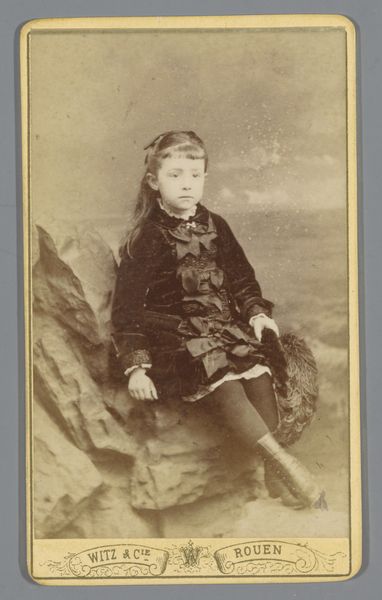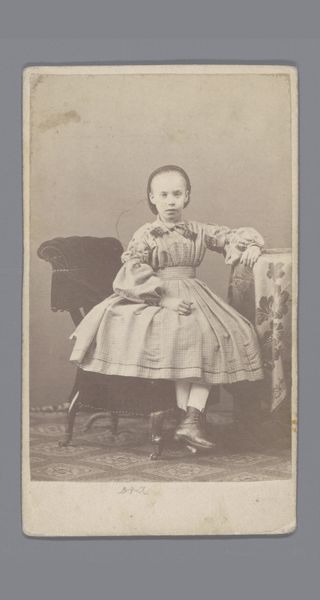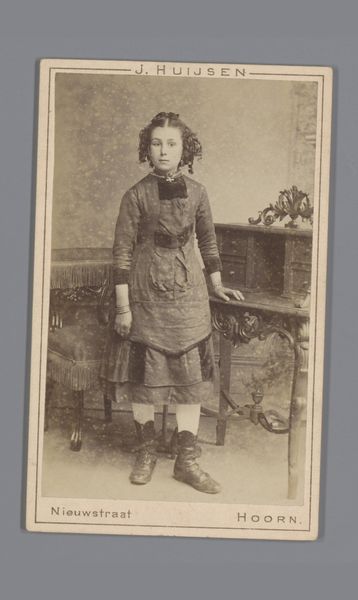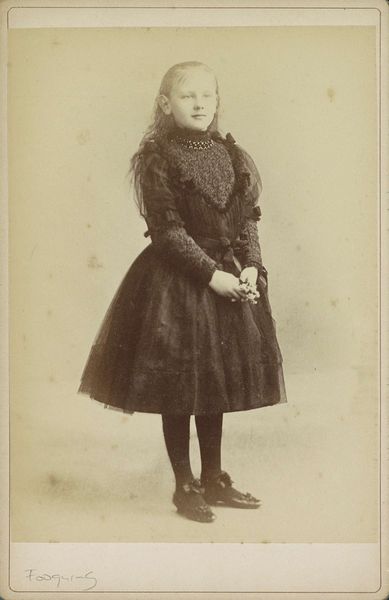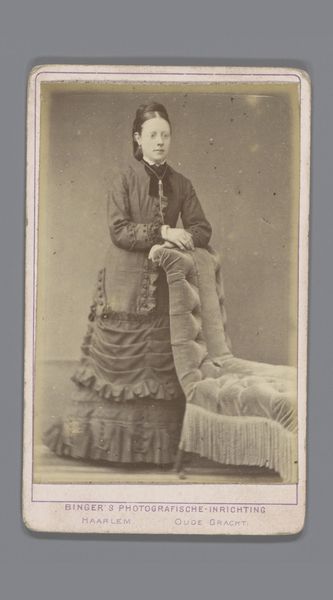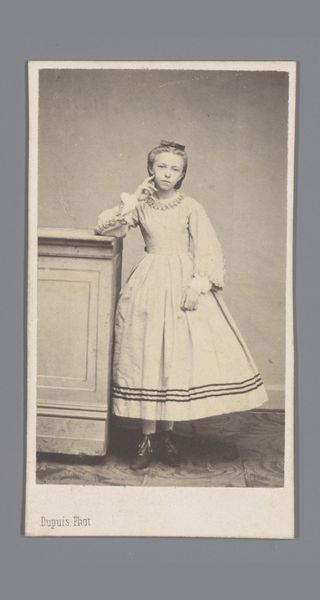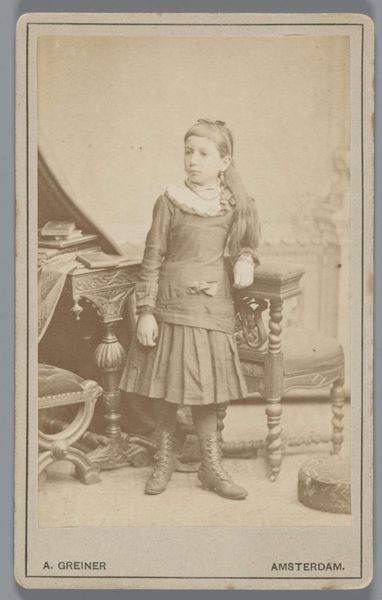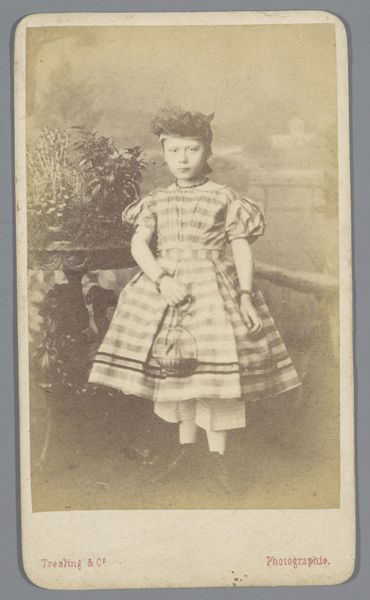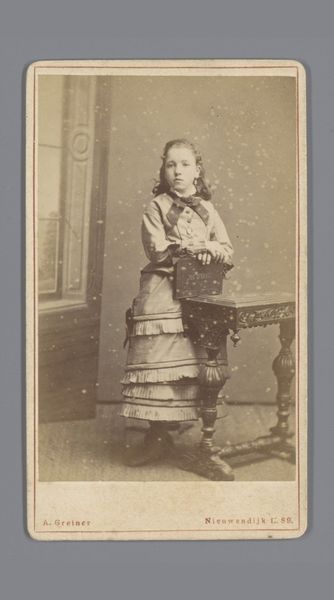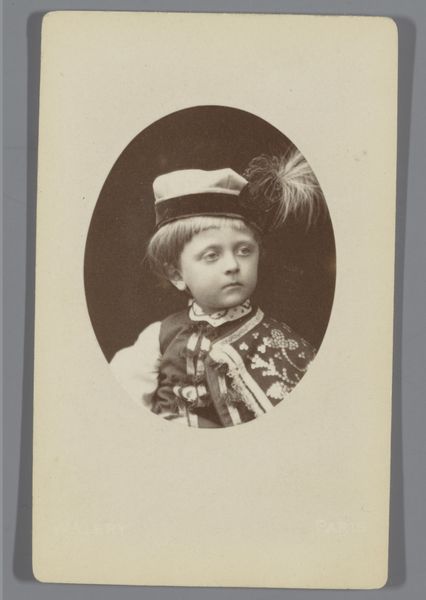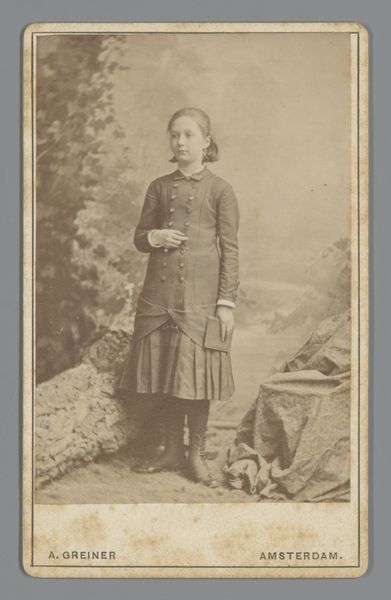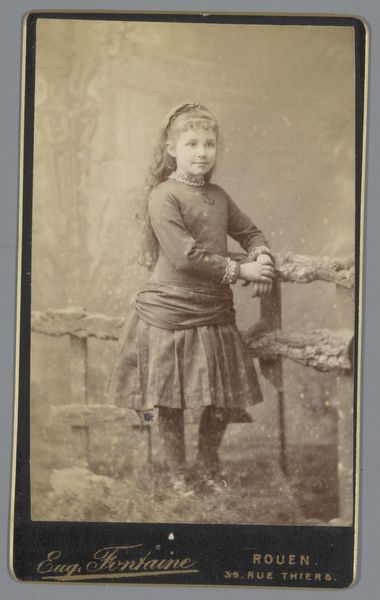
Portret van een onbekend meisje, aangeduid als Rose Plouvier 1866 - 1869
0:00
0:00
carjatetcie
Rijksmuseum
daguerreotype, c-print, photography
#
daguerreotype
#
c-print
#
photography
#
historical fashion
#
realism
Dimensions: height 105 mm, width 63 mm
Copyright: Rijks Museum: Open Domain
Editor: Here we have "Portret van een onbekend meisje, aangeduid als Rose Plouvier," taken between 1866 and 1869 by Carjat et Cie. It’s a photograph, mixing daguerreotype and c-print techniques, held at the Rijksmuseum. What strikes me is how staged and formal it feels, like this young girl is presenting herself in a very specific way. What do you see in this piece? Curator: Indeed. The formality speaks volumes about the social function of photography at that time. This portrait isn't just a personal memento; it's a carefully constructed presentation intended for a public, or at least a select, audience. How does the girl's attire contribute to this sense of public presentation? Editor: I guess the elaborate dress and boots are signifiers of status, showing she comes from a wealthy background. Also, the serious expression adds to that presentation. It's less about capturing her personality and more about portraying her social standing. Curator: Precisely. Portrait photography in the 19th century was often about conveying respectability and projecting a certain image. Carjat, as a company, undoubtedly catered to a clientele seeking this type of representation. What implications arise from her being "an unknown girl"? Does that alter the message of the piece? Editor: That's interesting, if she’s "unknown," it shifts the focus to the universal themes like childhood, status, and the performance of identity within the era. We aren’t looking at an individual but more broadly at social expectations for young girls in that period. Curator: Precisely! The anonymity grants the photograph a broader significance, allowing viewers to contemplate wider socio-political forces concerning identity during this pivotal epoch in photographic history. Editor: I never considered that! Thanks for shedding light on the context of status and how photographic portraits like this were used for social and political communication back then. Curator: And I think considering this from the viewpoint of an undergraduate will shed new light for visitors approaching the piece with fresh eyes!
Comments
No comments
Be the first to comment and join the conversation on the ultimate creative platform.
